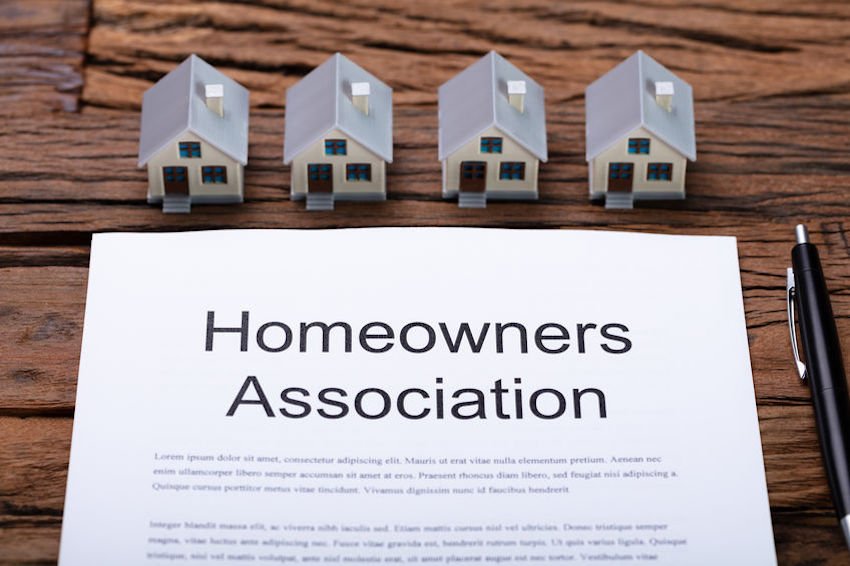The Ultimate Comparison: HOA Condo vs. Standard Home
The Ultimate Comparison: HOA Condo vs. Standard Home
Blog Article
The Function of an HOA in Establishing and Enforcing Neighborhood Standards for Locals
The duty of a Homeowners Association (HOA) in developing and enforcing neighborhood guidelines is basic to preserving a orderly and cohesive residential setting. By creating clear policies that regulate aspects such as home upkeep and area conduct, the HOA not just sets criteria for citizens however also cultivates a sense of belonging and accountability.
Recognizing House Owners Organizations
Homeowners organizations (HOAs) serve as controling bodies for property communities, playing an essential role in keeping home values and fostering a feeling of community. Typically developed by developers, HOAs are made up of homeowners within a marked area that elect a board to look after the association's tasks. The primary features of an HOA consist of imposing neighborhood rules, handling common areas, and arranging neighborhood events.
HOAs run under a set of controling records, including problems, commitments, and restrictions (CC&R s), which lay out the rights and obligations of home owners. These regulations intend to ensure that properties are preserved to a specific criterion, therefore protecting the aesthetic charm and general worth of the neighborhood. In addition, HOAs often collect dues from house owners to fund upkeep, landscape design, and various other social work.
The presence of an HOA can considerably influence the living experience within a community (hoa condo). While some homeowners value the organized setting and amenities given, others might locate particular policies restrictive. Balancing the interests of all homeowners is important for an HOA to function effectively, guaranteeing that it serves its intended purpose of enhancing community living while valuing specific home owner legal rights
Establishing Community Guidelines

To start, an HOA needs to perform studies or convene that permit residents to articulate their concerns and recommendations. This participatory process fosters a feeling of possession and increases compliance. Next, the HOA board must assess the responses to recognize typical styles and priorities that call for formal inclusion in the standards.
It is additionally important to make sure that the standards are clear, concise, and quickly comprehended. Uncertainties can result in problems and misconceptions, weakening the objective of the standards. The guidelines must be extensive, covering different aspects of area living, including building maintenance, sound levels, and usage of common areas.
Enforcement of Regulations
Efficient enforcement of area policies is crucial for keeping order and guaranteeing that all homeowners stick to the developed standards. An HOA must carry out an organized method to apply these policies, which usually involves a combination of surveillance, communication, and charges for non-compliance.
First, normal evaluations and area patrols can help determine offenses, ensuring that regulations are constantly applied throughout the area. This proactive tracking enables the HOA to resolve issues prior to they intensify, cultivating a feeling of accountability among citizens.
2nd, clear interaction is essential. Citizens should be informed of the guidelines and the treatments for reporting offenses. An open line of interaction urges residents to voice concerns and seek clarification on guidelines, which can improve compliance.

Lastly, when infractions occur, the HOA has to implement consequences as laid out in the regulating files. By properly implementing guidelines, an HOA can cultivate an unified living atmosphere that shows the cumulative values of its citizens.
Benefits of HOA Rules
Many advantages emerge from the application of HOA policies, which offer to improve the top quality of life within a community. One key advantage is the upkeep of residential property values. By applying standards for aesthetics and maintenance, HOAs ensure that homes and typical areas stay appealing, fostering a preferable living environment that can cause increased property worths in time.
Furthermore, HOA laws promote uniformity and harmony within the community. This coherence in style and upkeep aids to create a feeling of belonging amongst residents, contributing to neighborhood pride and a positive ambience. Established guidelines help with dispute resolution amongst next-door neighbors by offering clear assumptions and procedures for actions, therefore minimizing disputes.
Another significant benefit is the arrangement of shared facilities and services. Numerous HOAs handle neighborhood facilities such as clubhouses, parks, and pools, which boost leisure chances for residents. These facilities not just boost the lifestyle but also urge social interaction.
Eventually, the regulations set forth by find more information an HOA grow an efficient, unified area, ensuring that homeowners appreciate a high requirement of living while promoting a supportive setting for all house owners.
Typical Challenges Faced by HOAs
In the middle of the benefits that house owners associations (HOAs) can supply, they additionally encounter a range of challenges that can impede their effectiveness. Lots of homeowners may not get involved in meetings or community tasks, leading to a disconnect between the HOA board and homeowners.
Another difficulty is the enforcement of guidelines and rules. Disagreements can occur when citizens really feel that enforcement is inconsistent or biased, potentially bring about conflicts within the community. Furthermore, HOAs often deal with economic restraints, which can limit their ability to preserve typical locations or fund area tasks. This can develop dissatisfaction among locals who anticipate high criteria of maintenance.
In addition, navigating lawful complexities can be intimidating for HOAs. Transforming demographics and progressing area needs require HOAs to adjust their standards, typically fulfilling resistance from enduring citizens that are accustomed to navigate to this website conventional standards.
Verdict

By formulating clear policies that control facets such as home maintenance and area conduct, the HOA not just establishes criteria for residents but also promotes a sense of belonging and responsibility.Homeowners organizations (HOAs) offer as controling bodies for residential communities, playing an important duty in keeping building worths and promoting a feeling of neighborhood. Lots of home owners might not get involved in conferences or area activities, leading to a separate between the HOA board and locals. Developing and changing demographics check it out community needs require HOAs to adjust their standards, frequently satisfying resistance from long-lasting citizens who are accustomed to conventional norms. Through the growth of clear policies and constant enforcement, HOAs promote residential or commercial property maintenance, area satisfaction, and depend on among residents.
Report this page